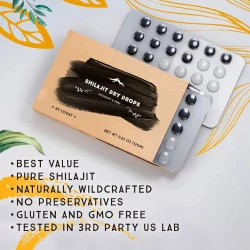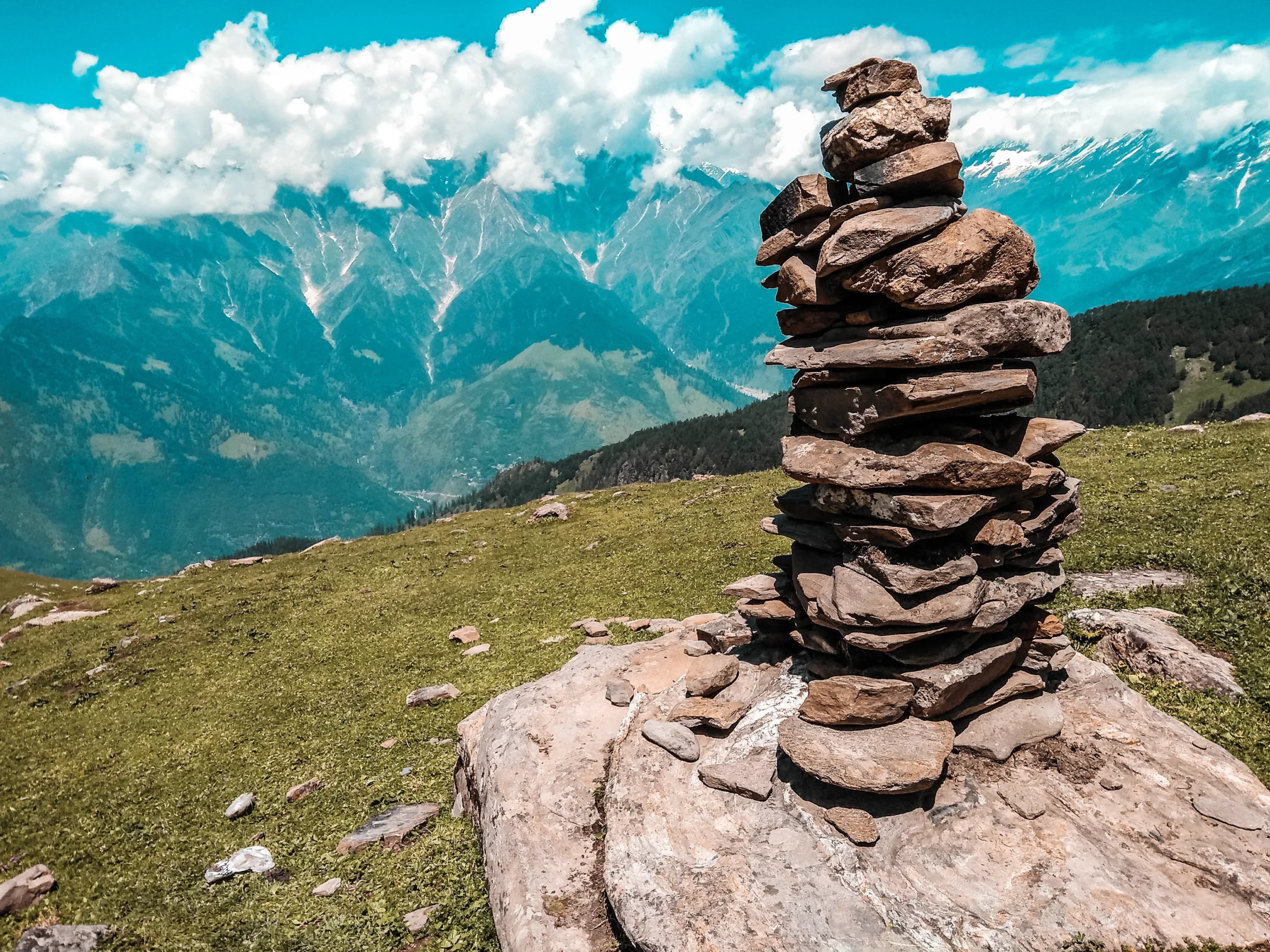
- 0 Comments
- admin
Shilajit- A Potent Mineral Source

Shilajit, also known as mineral pitch or mumijo-
is a sticky, tar-like substance that is found in the rocky mountainous regions of Central Asia, particularly in the Himalayas, Altai Mountains, Caucasus Mountains, and other mountain ranges. It is a natural exudate formed over centuries by the decomposition of plant and microbial matter.
The name “shilajit” has its origins in Sanskrit, an ancient language of India. In Sanskrit, “shilajit” is derived from the word “शिलाजतु” (pronounced as “shilajatu”), which is a combination of two words:
- “शिला” (pronounced as “shila”) – This means “rock” or “stone.”
- “जतु” (pronounced as “jatu”) – This refers to “extract” or “resin.”
When combined, “शिलाजतु” (shilajatu) translates to “the extract of rock” or “the resin from stone.” This name is highly fitting since shilajit is a sticky, tar-like substance that oozes out from rocky mountainous regions, particularly in the Himalayas and other Central Asian mountain ranges.
The term “shilajit” is deeply rooted in Ayurveda, the traditional Indian system of medicine, where it has been used for centuries as a natural remedy with various health benefits. Due to its long-standing use in Ayurvedic practices, the name “shilajit” has become widely recognized and is now used internationally to refer to this unique and beneficial substance.

The composition of shilajit can vary depending on the specific location where it is found, but it generally contains a complex mixture of minerals, fulvic and humic acids, organic compounds, and trace elements. It is believed to be rich in fulvic acid, which is a type of organic acid that has antioxidant properties.
Shilajit has a long history of use in traditional medicine systems-
particularly in Ayurveda, the traditional Indian system of medicine. It is highly regarded for its purported health benefits and is used as a tonic to improve overall well-being and vitality. Some of the reported benefits of shilajit include:
Energy and stamina boost: Shilajit is believed to enhance physical and mental energy levels and may help improve endurance and stamina.
Antioxidant properties: The fulvic acid and other compounds in shilajit are thought to have antioxidant effects, which can help protect the body from oxidative stress and free radical damage.
Cognitive function: Some studies suggest that shilajit may have positive effects on cognitive function, memory, and mental clarity.
Anti-inflammatory properties: Shilajit is believed to have anti-inflammatory effects, which may be beneficial for certain health conditions.
Immune system support: It is thought to support the immune system and aid in the body’s natural defense mechanisms.
Anti-aging properties: Due to its antioxidant and nutrient-rich composition, shilajit is sometimes promoted for its potential anti-aging effects.
Lorem ipsum dolor sit amet, consectetur adipiscing elit. Ut elit tellus, luctus nec ullamcorper mattis, pulvinar dapibus leo.

It’s important to note that while shilajit has a long history of traditional use and some studies have explored its potential health benefits, more scientific research is needed to fully understand its effects and safety profile. As with any supplement or natural product, it’s advisable to consult with a healthcare professional before using shilajit, especially if you have any underlying health conditions or are taking medications. Additionally, the quality and purity of shilajit products can vary, so it’s essential to choose a reputable source.

The process of shilajit formation begins with the decomposition of plant material, such as mosses, in the mountainous areas. Over time, the decomposition is facilitated by the action of microorganisms. As the organic matter breaks down, it combines with minerals and other compounds in the surrounding rocks, forming a sticky, tar-like resin. This resin oozes out of the rocks and accumulates over time, eventually becoming the substance known as shilajit.
The formation of shilajit is a slow and gradual process that can take hundreds or even thousands of years. The specific composition of shilajit can vary depending on the geological and environmental conditions of the region where it is found. As a result, shilajit from different locations may have slightly different chemical profiles and mineral content.
Because of its occurrence in remote and high-altitude regions, the collection of shilajit can be a challenging and labor-intensive process. Traditionally, it has been collected by local inhabitants of these mountainous areas who recognize its value for traditional medicine and health benefits.
Today, shilajit is harvested and processed for commercial use, and it is available in various forms, including as a powder, resin, or supplement. However, it’s important to ensure that shilajit products are sourced responsibly and sustainably to avoid environmental degradation and depletion of this natural resource.
The trace minerals found in shilajit can vary depending on the specific location where it is sourced. Shilajit is a complex substance that forms as a result of the decomposition of plant and microbial matter in rocky mountainous regions. It combines with minerals and other compounds from the surrounding rocks, leading to a diverse composition. While the exact mineral content may differ, some of the common trace minerals found in shilajit include:
Fulvic acid: While technically not a mineral, fulvic acid is a significant component of shilajit and is a naturally occurring compound that forms during the decomposition process. It is known for its antioxidant and chelating properties, which help in the absorption of minerals and other nutrients.
Iron: Shilajit can contain varying amounts of iron, an essential trace mineral involved in oxygen transport, energy production, and various enzymatic reactions in the body.
Copper: Copper is another trace mineral found in shilajit, playing a role in iron metabolism, immune function, and antioxidant processes.
Zinc: Zinc is an essential trace mineral that is vital for numerous bodily functions, including immune support, enzymatic reactions, and cellular growth and repair.
Magnesium: Shilajit may contain magnesium, which is involved in muscle function, nerve transmission, and bone health.
Calcium: Calcium, an important mineral for bone health and muscle function, can also be present in shilajit.
Manganese: Manganese is involved in various enzymatic reactions and plays a role in antioxidant defense.
Selenium: Shilajit may contain trace amounts of selenium, which is an essential mineral with antioxidant properties.
Potassium: Shilajit can have small amounts of potassium, an essential mineral that helps regulate fluid balance and muscle function.

It’s essential to note that the mineral composition of shilajit can vary depending on factors such as the geological conditions of the region where it is sourced. Additionally, the processing and purification methods used to create shilajit products may also influence their mineral content. As with any supplement, the quality and purity of shilajit products are crucial, so it’s advisable to choose reputable sources and consult with a healthcare professional if considering its use.

